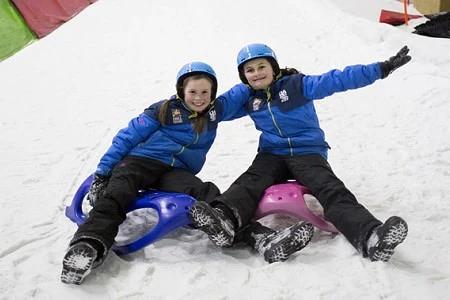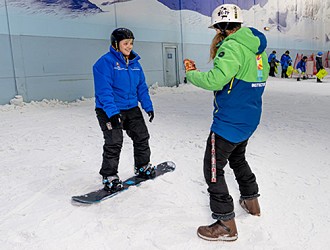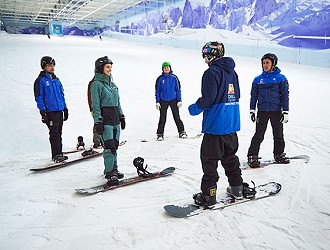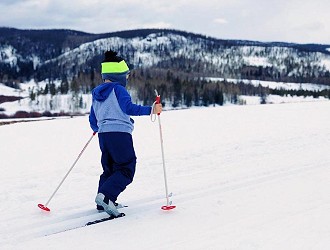How to stay active while you’re self isolating

As the nation goes into lockdown and leisure centres close their doors across the UK, few of us want to see our fitness levels drop and people have been looking for ways to work out while we are confined to our homes.
But how can exercise help during isolation? By exercising in small bursts with rest periods in between, you are working your heart and lungs to improve insulin levels and burn more energy. Exercise is also known for strengthening your immune system, improving your mental health and it’s also great for helping you feel better about yourself.
There are a couple of really easy exercises that you can do to strengthen up your body and keep yourself active.
1. Squats
Squats are one of the easiest ways of building strength in your legs as they work your hamstrings, calves and quadriceps. To do a squat, you also don’t need any equipment or even much room. All you need is enough room to lower your hips into a sitting position.
How to do it?
- Stand with your legs shoulder width apart.
- Push your hips back
- Bend your knees until your thighs are parallel to the floor.
- If your knees are in front of your toes, you’re not quite doing it right. Push those hips back a little more to correct this.
- Stand back up and repeat.
- Do this for three to four sets of 20, giving yourself a rest in between sets.
- If you’d like to make this a little harder for yourself, do the exact same motion but with weights. If you don’t have any weights in your home, then you can get creative with some everyday objects such as a tin of paint or a bag of potatoes (ideally unopened!).
2. Calf Raises
Sticking with the leg exercises for now, calf raises are also brilliant for building strength and mobility in your legs. They’re a useful exercise to do during isolation as they are simple, require no additional equipment and they do a great job of helping you improve stability.
How to do it?
- Stand up straight
- Push onto the balls of your feet and raise your heel until you’re standing on your toes.
- Lower slowly back down into your start position.
- Repeat two to four times with short rest breaks.
- If you’d like to make it a little bit harder for yourself, then you can add some weights with a dumbbell. If you don’t have a dumbbell then try using a bottle of wine.
3. The Plank
A strong core is the foundation of a fit, strong body, which is what makes the plank the perfect exercise. The plank helps strengthen your spine and abdominal muscles, and can even help you improve posture.
How to do it?
- Lie flat on the floor on your stomach.
- Rest your elbows on the floor, push up your hips and rest only on your elbows and toes.
- Hold the position for 60 seconds.
- To work on your oblique muscles, lift yourself onto one elbow and the side of your foot.
- Don’t let your hips dip during this exercise. Your body should form a relatively straight line when in the air.
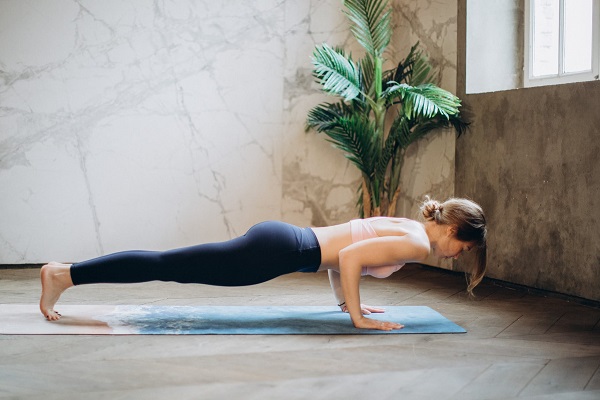
4. Push Ups
Think of these as a moving plank. Push ups engage several muscle groups in your arms, chest, upper back and core. What makes them a great is how they help facilitate everyday movement and they help you manage your blood pressure.
How to do it?
- Lie flat on the floor on your stomach.
- Your hands should be shoulder-width apart.
- Exhale and push up with your hands and lift yourself off the floor. Rest only on your hands and toes.
- Pause for a second to keep your core engaged.
- Inhale and lower yourself to the floor by bending your elbows. Your elbows should be at about a 45 angle.
- Do this for three to four sets of 20 and rest in between each set.
5. Burpees
Burpees don’t have a massive fan following as it goes without saying, they’re hard. But they have some amazing benefits as they combine both strength training and cardio. To top it off they also require a certain level of balance and coordination. What makes them incredibly convenient for home workouts is the fact that they require no equipment and you work your entire body.
How to do it?
- Stand with your feet shoulder width apart, placing your arms by your sides.
- Bend your knees and reach forward to place your hands on the floor.
- Kick your legs straight out behind you and lower your body down to the ground, bending your elbows.
- Use your arms to quickly push your body back up and tuck your legs back towards your body.
- Jump straight up into the air, reaching your arms overhead.
- Finish the burpee with your knees slightly bent and then repeat.
- Do this two to three times for 20 seconds.
6. Mountain Climber
Similar to burpees, this exercise works several different muscle groups and is almost like getting a total body workout with just one exercise. Mountain climbers are great for building cardio, strength and coordination.
- Start in a press up position with your hands shoulder width apart.
- As quickly as you can, pull your right knee towards your chest without letting it touch the floor.
- Return your leg to the start position and repeat the same technique with your left leg.
- Repeat this for two to three times sets of 15 with rests in between.
Top Tips from Chris Wood, Your Sports Therapist
- Get Creative: In the absence of your usual gym setup, use chairs, steps, carrier bags of shopping, tins of beans…or even loo roll to replicate your gym exercises!
- Beginner Moves: If you’re an absolute beginner, start with going for a walk, or even doing low impact exercise such as Yoga, Pilates and Tai Chi which will offer the same mood boosting effects of exercise, but also get your joints moving which is ideal during a period where you may not move much during the day.
- Seek professional advice: The internet is awash with fantastic free resources for exercise. However enlisting the help of a personal trainer or fitness instructor who can understand you, your goals and any injuries you may have will be vital to getting the most out of your exercise regime at home whilst also giving you some accountability to your goals too!
Challenging yourself and achieving physical goals during this period of isolation will give you something to work towards and stimulate your mind as well as your muscles. If you need a little push in the right direction or if you’re a total beginner, there are several apps and YouTube videos that can help you find the right work out for you.


